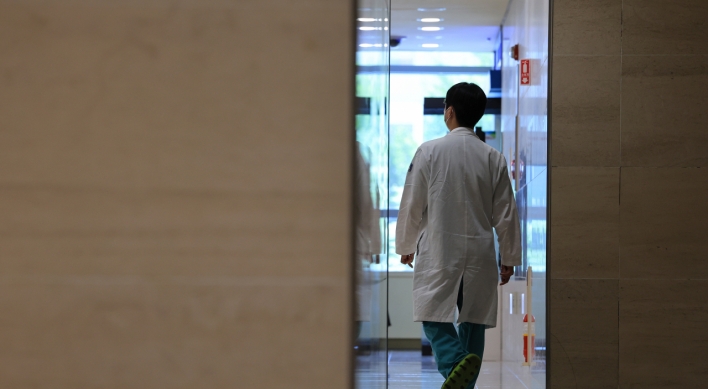Scientists identify new cell to lower risk of hardening of arteries
ByPublished : Nov. 11, 2011 - 09:37
A group of scientists, including one of the two recipients of this year's Nobel prize in medicine, the late Ralph M. Steinman, has identified a new cell that helps reduce risks of the hardening of the arteries, South Korea's science ministry said Friday.
The research, published Thursday (U.S. time) on the web site of the international science journal Immunity, was partly funded by South Korea's Ministry of Education, Science and Technology.
According to the ministry, the researchers have confirmed that immune cells, called FMS-like tyrosine kinase receptor-3 (Flt3), that previously were thought to exist only in immune system organs also exist in blood vessels. They were found to help increase the density of lymphocytes in blood, which in turn lowers the risks of atherosclerosis, the hardening of the arteries.
The cells are dendritic, which is a term coined in 1973 by the late professor of The Rockefeller University, which eventually won him this year's Nobel prize, three days after his death.
The findings are currently confined to mice, but similar findings in humans may open up a new way to treat the disease.
"We plan to confirm with the joint research team whether the dendritic cells with such a mechanism also exist in humans," said Oh Goo-taeg, a professor from Seoul's Ewha Womans University.
The research group also included Prof. Choi Jae-hoon of South Korea's Hanyang University and Jung Cheol-ho of The Rockefeller University. (Yonhap News)
동맥경화 억제하는 면역세포 발견
국내 연구진, 故 랄프 스타이먼 교수와 공동연구
국내 연구진이 올해 노벨상 수상자인 고(故) 랄프 스타이먼 교수와 함께 동맥경화를 억제하는 면역세포를 찾아냈다.
교육과학기술부는 이화여대 오구택 교수, 한양대 최재훈 교수, 미국 록펠러대 고 랄프 스타이먼 교수, 정철호 박사가 주도한 연구팀이 동물(쥐) 실험을 통해 'Flt3 의존성 수지상세포'가 동맥경화의 진행을 늦추는 사실을 확인했다고 10일 밝혔다.
수지상(나뭇가지 모양)세포는 인체에 바이러스나 병원균이 침입했을 때, 종양과 같은 비정상 세포가 생겼을 때 이를 잡아먹고 분해한 뒤 임파절의 T-세포에 침입 균 항원이나 암항원의 정보를 전달하는 중요한 면역세포다.
고 랄프 스타이먼 교수는 1973년 생쥐의 면역장기에서 이 세포를 발견해 올해 노벨생리의학상 수상자로 선정됐다.
이 가운데 'Flt3 의존성 수지상세포'는 Flt3 단백질을 받아들여 결합할 수 있는 수용기를 가진 수지상세포 종류를 말한다.
연구진은 유전자 조작을 통해 Flt3 유전자(단백질)가 결핍된 쥐의 혈관에 Flt3 의존성 수지상세포 역시 부족하다는 사실, 이 쥐에서는 동맥경화증이 더 빨리 진행 한다는 사실을 확인했다.
혈관 속에 지방이나 콜레스테롤이 많이 쌓이면 염증을 일으키기 때문에 동맥경화는 일종의 만성 염증 질환이다. 염증을 제거하기 위해 면역세포들이 활동하지만, 제 역할을 다 한 면역세포들이 정상 수준으로 제어되지 못하면 정상세포까지 해를 입고, 동맥경화가 악화될 수 있다.
따라서 이 면역반응을 적절히 조절하는 림프구가 존재하는데, Flt3 의존성 수지 상세포가 이 면역조절 림프구를 늘려 결과적으로 동맥경화를 억제하는 역할을 한다는 게 연구진의 설명이다.
오구택 교수는 "동맥경화에서 Flt3 의존성 수지상세포의 역할을 처음 밝힌 연구 결과"라며 "추가 연구를 통해 Flt3 의존성 수지상세포를 활용한 동맥경화 치료제 개 발이 가능할 것"이라고 밝혔다.
이 논문은 세계적 권위의 생명과학분야 학술지 '셀(Cell)'이 발간하는 자매지 '이뮤니티(Immunity)' 10일자 온라인판에 실렸다.









![[Kim Seong-kon] Democracy and the future of South Korea](http://res.heraldm.com/phpwas/restmb_idxmake.php?idx=644&simg=/content/image/2024/04/16/20240416050802_0.jpg&u=)








![[Today’s K-pop] Zico drops snippet of collaboration with Jennie](http://res.heraldm.com/phpwas/restmb_idxmake.php?idx=642&simg=/content/image/2024/04/18/20240418050702_0.jpg&u=)